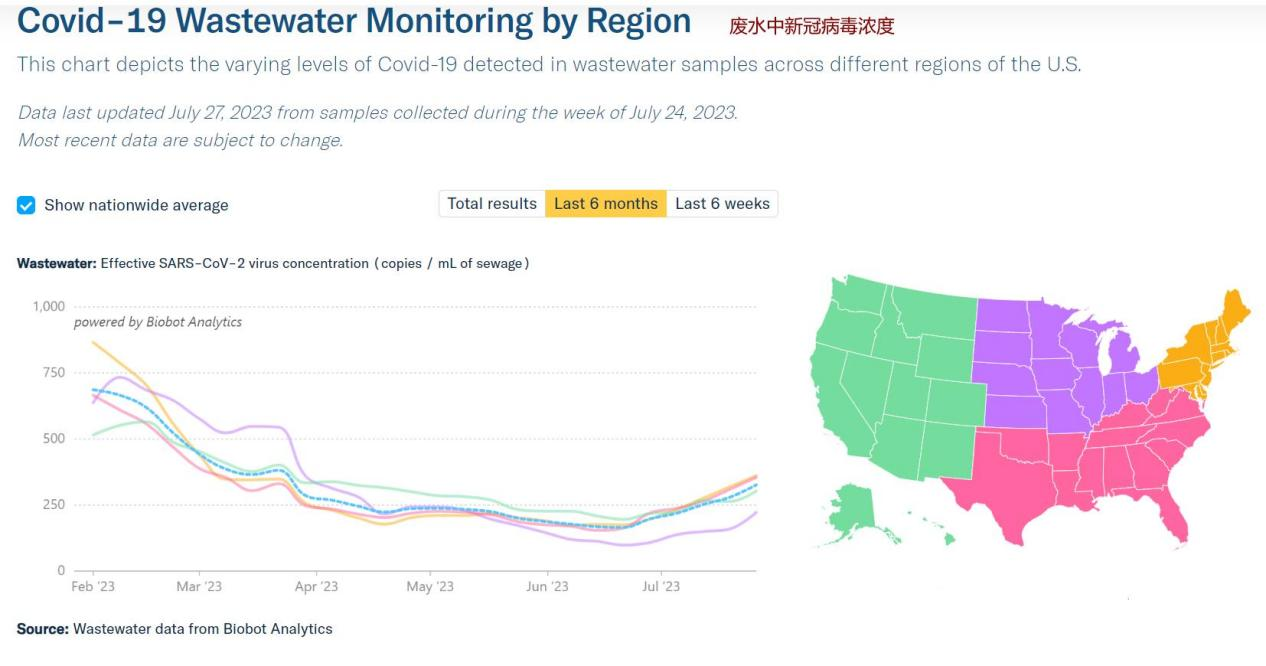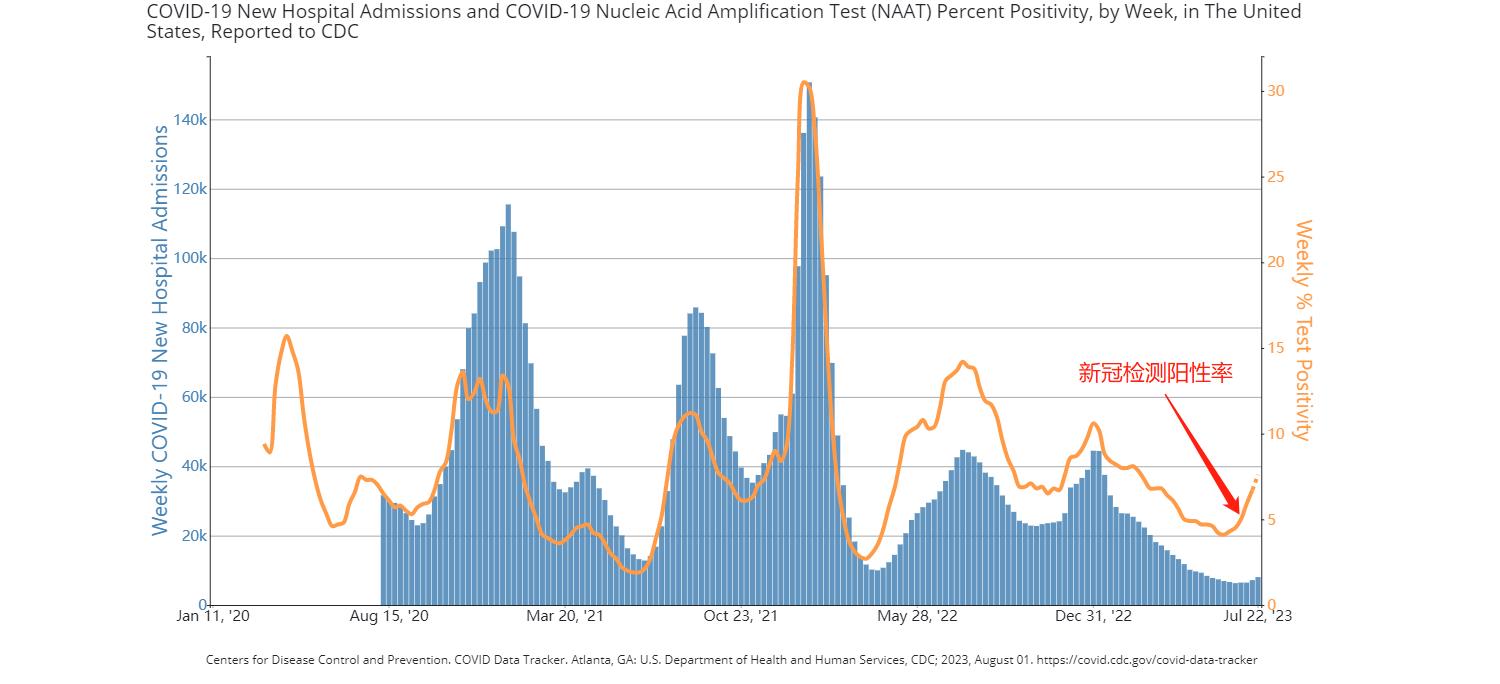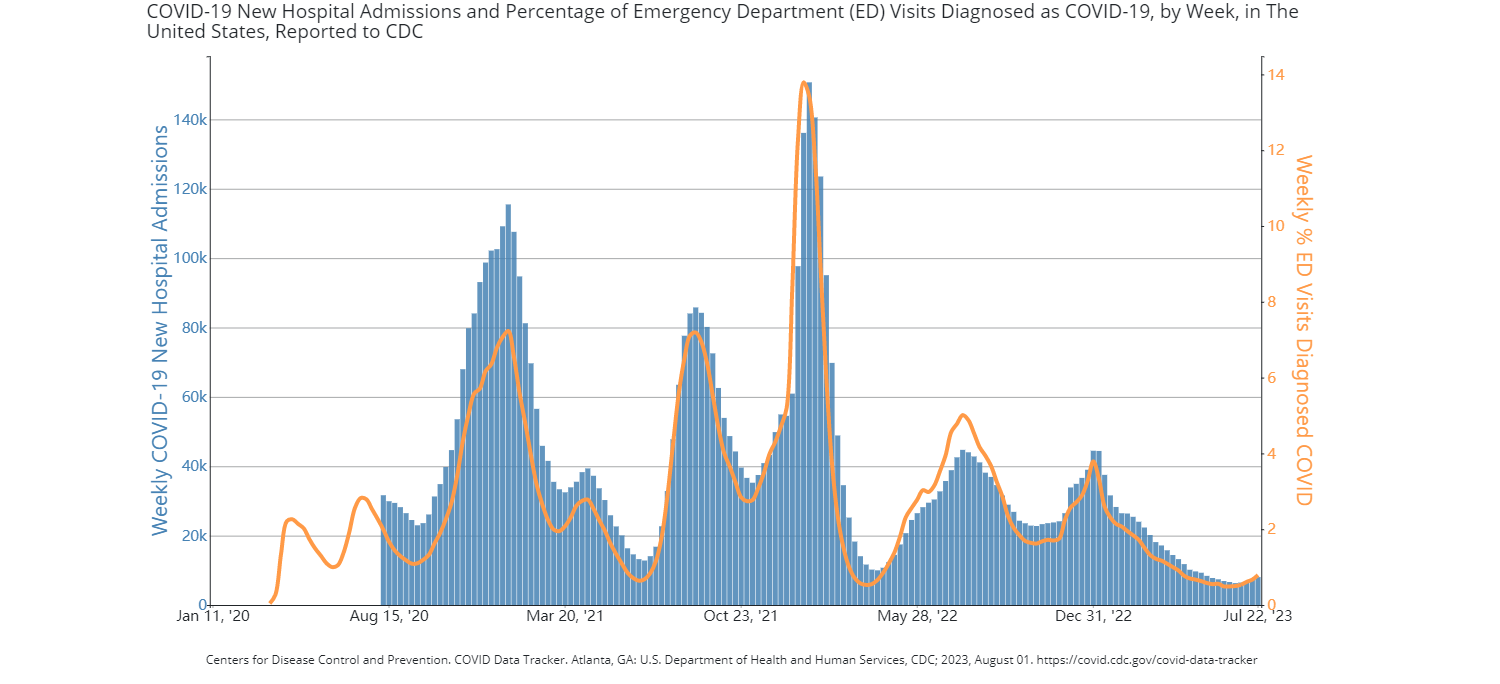All four key indicators of SARS-CoV-2 in the United States have increased, suggesting the early stages of a new wave of the pandemic
2023-08-07
In July 2023, according to data from the Centers for Disease Control and Prevention (CDC) in the United States, four key indicators including monitoring of SARS-CoV-2 virus concentration in wastewater samples, COVID-19 positivity rate, emergency department visits, and hospitalizations have all increased. The first two indicators have shown a continuous increase for 4-6 weeks. This suggests a reversal in the improving trend of the COVID-19 situation in the United States since 2023. Recently, major media outlets in the United States have also started to pay renewed attention to the COVID-19 situation, and there is a general consensus that the country is in the early stages of a new wave of the pandemic.All four key indicators have increasedThe concentration of SARS-CoV-2 virus in wastewater samples is a highly objective monitoring indicator. The latest updated data shows an increase in the SARS-CoV-2 virus concentration in wastewater samples across the four major regions of the United States, with the most significant increases observed in the Northeast and Southeast [1]. According to the latest data from Biobot, an epidemiological wastewater company in Cambridge, Massachusetts, the concentration of the SARS-CoV-2 virus in wastewater nationwide increased by 17% compared to the previous week as of July 26th [2]. However, despite the sustained increase in relative values of the COVID-19 virus in wastewater over the past six weeks, it's important to note that the absolute values of the virus concentration in wastewater remain low compared to the peak of the COVID-19 pandemic, as the situation has been improving since 2023.




